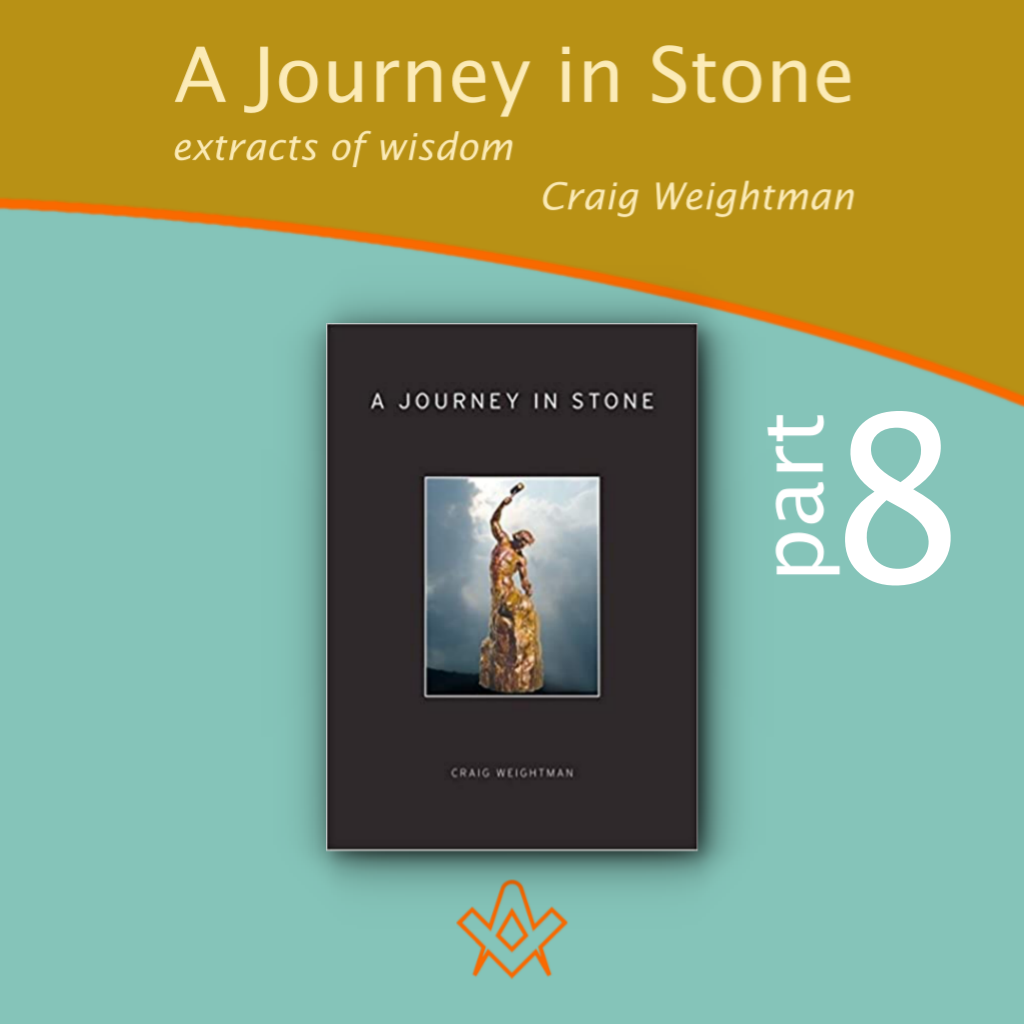For those who have enjoyed Craig Weightman’s thought-provoking and inspiring monthly features, this book collates his collective wisdom and philosophy, taking you on a fascinating ‘journey in stone’.
Over the next months, we will feature select extracts from ‘A Journey in Stone’ – if you enjoy these, please support Craig’s work by buying a copy.
“This book is the result of years of exploration by myself since I joined the Order of Freemasons in 2004. After following an identical story to the one expressed at the beginning of this preface, I found the process of initiation a truly transformative process.”
Craig Weightman.
A Journey in Stone
The journey of the Freemason, from the state symbolised by the rough ashlar, via the understanding of the application of the symbolic working-tools, to the state symbolised by the perfect ashlar, is intended to symbolically end in the placing of the stone into a symbolic building

‘The Entrance to King Solomon’s Temple’
IMAGE LINKED: wikimedia Attribution 4.0 International (CC BY 4.0)
Technically, any building that is made out of stone blocks would do. However, Freemasonry has a particular building in mind to act as the perfect symbol for the wider purpose of Freemasonry. That building is King Solomon’s Temple.
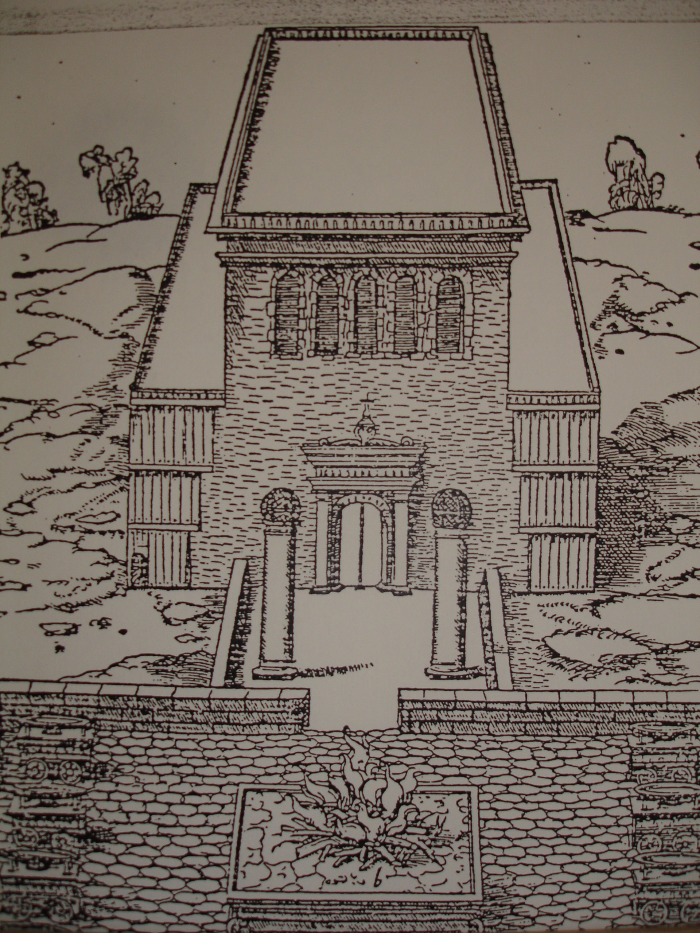
Depiction of Solomon’s Temple in Jerusalem by the 16th-century French scholar François Vatable.
IMAGE LINKED: wikimedia Attribution 4.0 International (CC BY 4.0)
The reason that this particular building is used in Freemasonry is because it is the ideal symbol for its purposes.
It is the most important building mentioned in the Bible, which is just one expression of the Volume of the Sacred Law.
When Freemasonry was developed in Europe, Christianity was the dominant religion, and it would have been this particular religion that the mediaeval stonemason would have subscribed to.
Therefore, the most important building mentioned in the central scripture of Christianity would have been the most appropriate symbol recognisable to the Mason of that time.
King Solomon’s Temple was particularly important in the Bible because it was considered to be the actual house of God.
In modern times, we might use the term ‘house of God’ with reference to any church, but in the times of ancient Judaism it was taken to be literal in the case of the first temple. They believed that God actually lived there.
This temple was essentially the centre of Jerusalem, and because of this, the city itself was considered the most holy of cities.
Being a Jew in those times and being literally so close to where God is believed to have dwelt, must have been a very humbling experience.
Going to pray at the temple was literally believed to be the same as going to God’s house and asking Him personally.
It can be seen, then, that this temple is the ideal symbol for a Freemason. Since so much expense and effort went into the construction of this building it serves as a perfect benchmark for the stonemason to adhere to when crafting the materials of the building that they might be working on.
However, for the speculative Freemason, the Temple itself represents much more.
It should be remembered that all Masonic lodges represent King Solomon’s Temple, which is why lodge rooms are sometimes called temples.
Therefore, all Freemasons meet inside a representation of the first temple at Jerusalem, and anything that the lodge room itself symbolises applies to the symbol of the temple itself.

Illustration of the analogy between the human body and a geocentric cosmos. Robert Fludd: Der Mensch als Mikrokosmos, 1619.
IMAGE LINKED: wikimedia Attribution 4.0 International (CC BY 4.0)
Two things are symbolised by the Masonic lodge room: the macrocosm and the microcosm. The macrocosm is the wider Universe and everything in it, while the microcosm is considered to be the human being.
In ancient times, in esoteric traditions, it was believed that the wider universe was related to the inner world of the human being.
This is where the idea of the zodiac comes from, and why it was believed that the patterns of the stars and the movements of the planets could determine a human being’s fate.
Understanding the human mind was a way of understanding the wider universe, since in these traditions the two were related.
Therefore, the Freemason’s lodge represents the universe at large.

Left: Ceiling of the Grand Temple at Freemasons’ Hall, London. By The wub – Own work, CC BY-SA 4.0,
Right: Chequered floor and Master’s Chair – Grand Temple at Freemasons’ Hall, London. By The wub – Own work, CC BY-SA 4.0,
IMAGE LINKED: wikimedia Attribution 4.0 International (CC BY 4.0)
Ideally, the ceiling is painted in a dark blue colour, representing the night sky, and the zigzag pattern around the edge of the chequered floor of the lodge is supposed to represent the motion of the planets.
The black and white floor itself represents the opposites encountered in life, like light and dark, good and evil, difficult and easy, or beautiful and ugly.
The Masonic Candidate moves around the lodge on this Masonic flooring, showing the pathway of a Mason through their life and through the trials and tribulations we all encounter in our lives.
The two Wardens in the lodge represent the sun and the moon, and the orientation of the lodge room is according to the compass points.
The entrance to the lodge is in the West, where the sun sets, the East being at the other end, where the Master sits, representing the rising sun.
If we compare the Masonic lodge room, based as it is on the wider universe, with the original temple at Jerusalem, we can see how the latter might represent the universe at large, with God situated at its centre.
The microcosm, as has already been mentioned, is also represented by the Masonic lodge room, and it is here where we can further relate the lodge to the idea of initiation.
With the aid of the officers within a Masonic lodge we can see how initiation works and how initiation can be seen to be a journey within oneself.
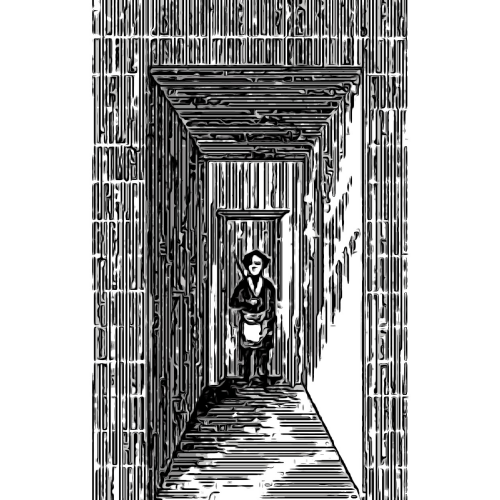
Outside the door of the lodge stands the Tyler, who is essentially a guard to prevent any unqualified person from entering the meeting taking place inside.
Psychologically speaking, this person represents the ability to be selective in what we see and hear. It is all too easy to believe everything that we hear, and we must be discerning so that we can get a more accurate representation of the world in our minds.
For instance, it is well known that we should be mindful of listening to gossip, since we could end up getting the wrong idea about a person when that idea could be unjustified.
Essentially, anything that we allow into our minds should be as accurate as possible, and tested with our sense of logic and insight.
If we don’t know anything about a person, or a situation, we should be mindful of exactly what we observe and seek to learn more about them from experience.
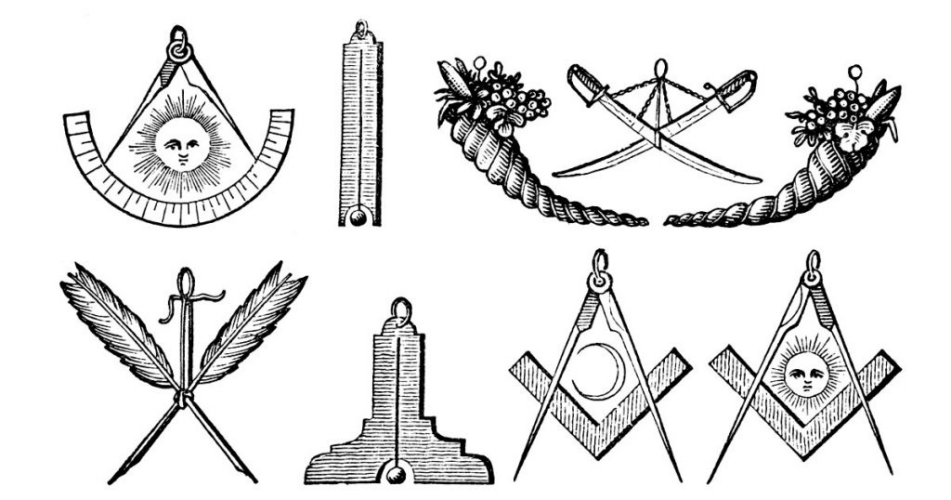
Inside the door of the lodge, there stands the Inner Guard, who acts as a double-measure of security for the lodge. This insistence on ensuring that no one unqualified enters the lodge room backs up the psychological need to be aware of what we allow into our minds.
However, the Inner Guard also has the job of allowing people out of the room if they leave. This represents the psychological faculty of being mindful of what one says. Everyone knows that some of what we say can be inappropriate and hurtful, so we should be mindful of every situation in which we might need to choose our words carefully.
Another instance of being careful of what we say is when people confide in us. The trust that has been placed in us when we are asked to keep a secret is fundamental to the stability of that particular relationship.
Any information that a person doesn’t want disclosing should be kept firmly within one’s mind. Of course, it is also important to be aware of how we speak to people, and therefore clear and articulate speech should always be our preferred style of communication.
Once past the door of the lodge there are other officers that have special significance psychologically.
The first of these officers are the Deacons, whose job it is to lead the Candidate around the lodge room during an initiation ceremony. The Deacon’s job is to ensure that the Candidate knows what to say at particular parts of the ceremony.
Psychologically, this represents the part of us that seems to aid us in our endeavours through life. Whenever we start something new, it is likely that we are not fully aware of what is to be expected of us.
The unknown in any new situation can instil fear in us, since the psychological make-up of a human being keeps us safe by guiding us away from unknown situations where there might be danger.
However, by understanding that we are capable of more than we initially think we are we can boldly step into undiscovered territory, no matter what or where it might be in life.
The voice of the Deacon prompting the Candidate in their ear is the same as this guiding principle that helps us in new situations.
After the two Deacons in the lodge, there are the two Wardens: the Junior Warden, and the Senior Warden. The Junior Warden represents both beauty and the sun. Beauty is a quality that most of us recognise, and it seems to be fundamental to the workings of our mind.
The sun which, being the source of natural light, represents the source of knowledge. This symbol reminds the Freemason of the need to educate themselves, as pointed out by the symbolism of the chisel in the First Degree.
The Senior Warden in the lodge also represents two things, namely the quality of strength and the Moon. Strength is required in all our endeavours; it is not simply a faculty that is associated with one’s physical muscles, but is more a quality of mind.
The Senior Warden also represents the moon: this is the principle in man that is illuminated by the divine light represented by the sun rising in the East. In very ancient times, the sun was associated with divinity.
It was the light of the sun that brought life and purpose to everything and was literally the origin of the life principle. Furthermore, it is the light of the sun that illuminates the moon.
Without it, the moon would be invisible at night. Therefore the moon represents the faculty that casts the light of knowledge to penetrate the darkness of ignorance.
Finally, the officer in charge of the whole lodge is the Master of the lodge, who represents both wisdom and the light that shines from the East [which] is directly related to the faculty of wisdom. Wisdom is an interesting subject.
It is often confused with knowledge, but this does not quite offer a complete definition of what wisdom actually is.
Certainly, wisdom requires knowledge. However, that knowledge only enables us to engage more with the world around us and encourages the faculty of wisdom to flourish.
Wisdom also requires experience, because acquiring facts is one thing, while spending time applying and experiencing the things that comprise this knowledge is entirely another.
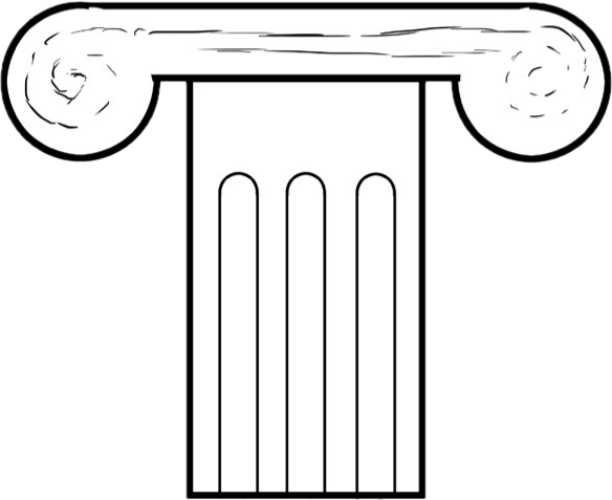
‘The Ionic Column, Representing Wisdom’
IMAGE LINKED: wikimedia Attribution 4.0 International (CC BY 4.0)
Throughout the Freemason’s career, they will advance through the offices from Inner Guard to the Master of the lodge. This, in itself, is part of the journey of Freemasonry.
The taking up of each office, in turn, symbolises the embodiment of each of the different aspects of the inner human psyche.
As the Freemason contemplates the faculty represented by the office they hold, they slowly come to an understanding of their total inner life and, as they progress towards the chair of the Master of the lodge, they are following a symbolic pathway deeper and deeper into the Self, culminating in the source of wisdom represented by the Master.
This symbolic journey should mirror the development of the individual’s conscious mind as they establish more and more of a connection with their innermost selves.
Having learned how King Solomon’s temple can represent both the wider universe and the inner human being, and demonstrated how these two are connected, it probably won’t be too surprising to learn that there is another thing the ancient temple at Jerusalem is meant to represent: human society as a whole.
The image of society being built around a central transcendent principle then can still work. Even with diverse belief systems in the world, the simple acceptance of each religion as a genuine perspective will allow mutual respect.
People who claim to be atheists can still see value in this model of society, because it is obvious that the origin of all things can be approached through scientific examination alongside the emotional, inner psychological exploration that can be embarked upon when appreciating a beautiful work of art that challenges perceptual concepts.
It is not necessary to see the source of all things as a God, since God is simply a word that conveys a dim shadow of the true reality.
There is indeed something that originated the universe, which, ultimately, can only truly be understood in part.
The main feature that King Solomon’s Temple highlights is the need for interdependent relationships for society to function properly. Human civilisation cannot work properly if people act from the position of the Self, and don’t acknowledge the greater need for selflessly directed action.
Reproduced with permission from the publisher Lewis Masonic. All rights reserved.
Follow Craig on Twitter: @WeightmanCraig
Read about Craig’s work as a Senior lecturer in Games and Visual Effects, Staffordshire University
https://theconversation.com/profiles/craig-weightman-430199/articles
Video Presentation
Article by: Craig Weightman

Craig Weightman grew up in Hinckley, Leicestershire and was educated at the University of Leicester, gaining a degree in Psychology and Computer Science.
He was initiated into Freemasonry in 2003, and became master of his lodge in 2014.
Outside of his interests in Freemasonry, Craig is a lecturer in Computer Games Design and Computer Science at a college in Warwickshire. He also develops websites for businesses.
Craig is the author of 'A Journey in Stone'.
 A Journey in Stone – Extracts of Wisdom p.10 More extracts of wisdom from Craig Weightman's book 'A Journey in Stone' – in this final part in the serialisation, we discover the Transformative Symbolism of the Royal Arch – and the end of the journey. |
 A Journey in Stone – Extracts of Wisdom p.9 More extracts of wisdom from Craig Weightman's book 'A Journey in Stone' – this month, we explore the 'Illusion of the Self and the Truth of Interdependency' |
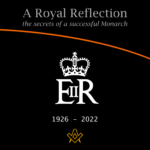 A Royal Reflection – the secrets of a successful Monarch On the death of Her Majesty Queen Elizabeth II, Craig Weightman, in a fitting tribute to an exemplar, recently departed, reflects on how the late Monarch's life demonstrated how we should all live every moment, as we serve others. A poignant reflection on a life that was resplendent in virtue, to the benefit of all, which is what Freemasonry attempts to teach us. |
 A Journey in Stone – Extracts of Wisdom p.8 More extracts of wisdom from Craig Weightman's book 'A Journey in Stone' – this month, we explore |
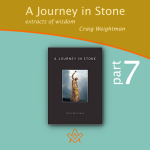 A Journey in Stone – Extracts of Wisdom p.7 More extracts of wisdom from Craig Weightman's book 'A Journey in Stone' – this month, we explore |
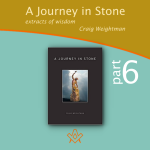 A Journey in Stone – Extracts of Wisdom p.6 More extracts of wisdom from Craig Weightman's book 'A Journey in Stone' – this month, we explore the Working Tools of the Third Degree. |
 A Journey in Stone – Extracts of Wisdom p.5 More extracts of wisdom from Craig Weightman's book 'A Journey in Stone' – this month, we explore the Working Tools of the Second Degree. |
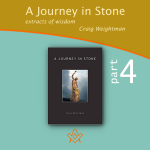 A Journey in Stone – Extracts of Wisdom p.4 The Working Tools of the First Degree – the twenty-four-inch gauge. This book collates masonic author and psychologist, Craig Weightman's collective wisdom and philosophy, taking you on a fascinating 'journey in stone'. |
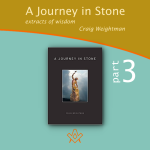 A Journey in Stone – Extracts of Wisdom p.3 This book collates masonic author and psychologist, Craig Weightman's collective wisdom and philosophy, taking you on a fascinating 'journey in stone'. |
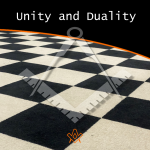 Craig continues his previous exploration into the 'hero's journey' through life's travails; this month we discover how within the stormy sea of battling opinion and confusion, there is an island called Freemasonry. |
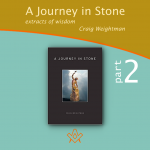 A Journey in Stone – Extracts of Wisdom p.2 This book collates masonic author and psychologist, Craig Weightman's collective wisdom and philosophy, taking you on a fascinating 'journey in stone'. |
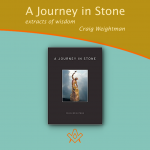 A Journey in Stone – Extracts of Wisdom p.1 For those who have enjoyed Craig Weightman's thought-provoking and inspiring monthly features, this book collates his collective wisdom and philosophy, taking you on a fascinating 'journey in stone'. |
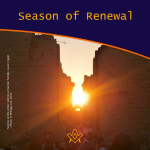 This spectacle takes place at the same time every year. Literally, the sun 'dies' for three days, then is reborn on the Christmas morning. |
 Coming to Terms with the Great War Within Ourselves Discover your 'shadow' - the black-and-white path to self-awareness - "A man who is possessed by his shadow is always standing in his own light and falling into his own traps...living below his own level." - Carl Jung |
 The Masonic Art of Being a Gentleman What defines the masonic art of being a gentleman; a chivalrous, courteous, or honourable man? |
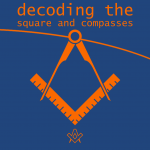 Decoding the Square and Compasses The square and compasses is the most famous symbol with which Freemasonry is identified. However, this is not just a logo that helps the organisation to stand out from the rest. |
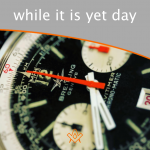 Each moment is a gift that you can make the most of. We can all do more; many of us do not live our lives to the full. |
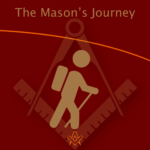 The hero’s journey can also be seen in the Masonic system; a candidate first considers embarking on the Masonic journey but wonders whether it is really for him |
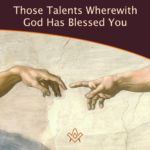 Those Talents Wherewith God Has Blessed You Incorporated in the charge to the initiate, has a lasting impression of what Freemasonry is all about. |
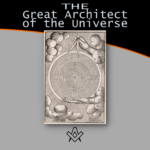 The Great Architect of the Universe When a candidate for 'Regular' Freemasonry is interviewed, prior to being admitted, he is always asked if he believes in a Supreme Being. |
masonic knowledge
to be a better citizen of the world
share the square with two brothers

click image to open email app on mobile device


